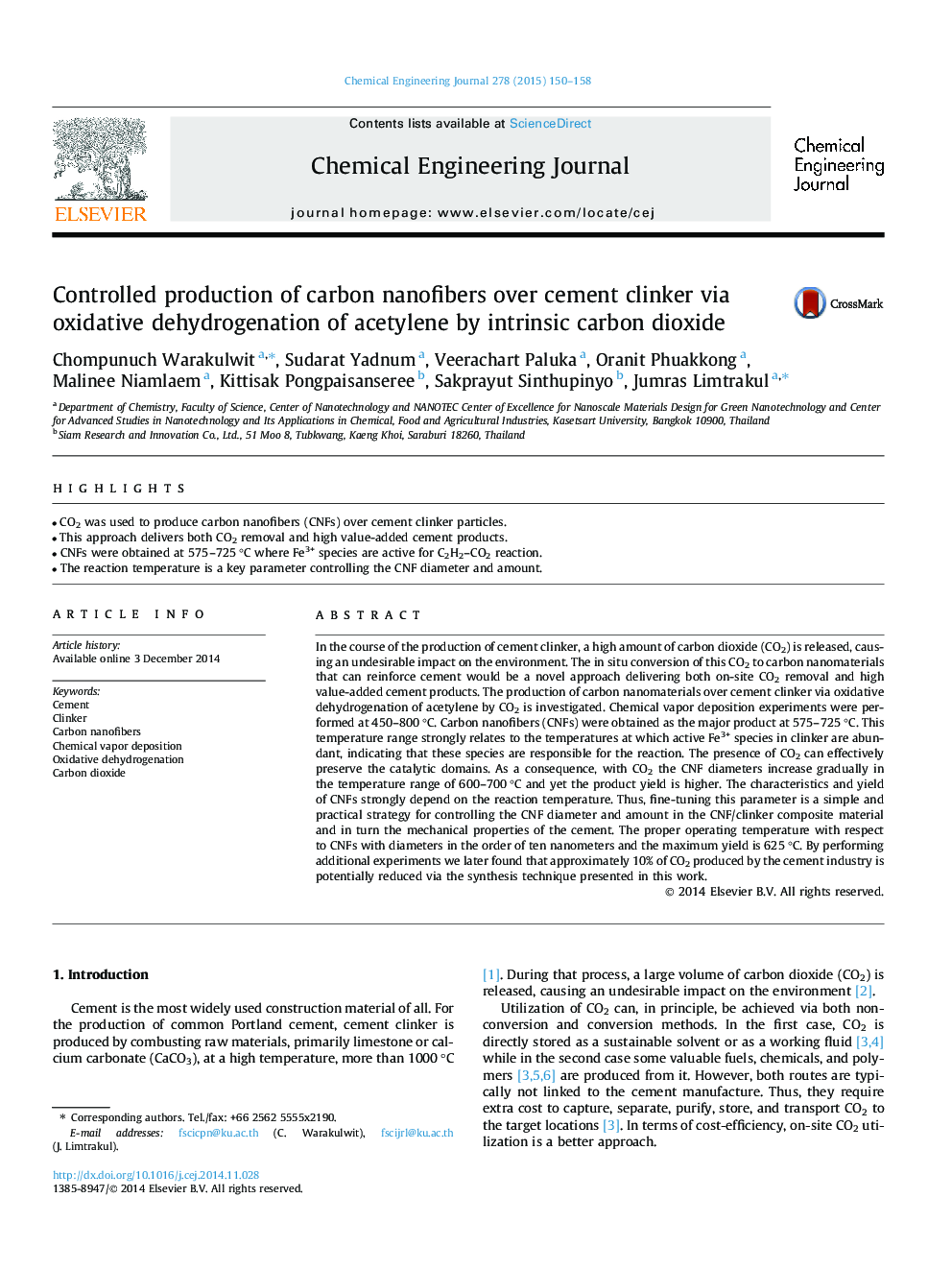| کد مقاله | کد نشریه | سال انتشار | مقاله انگلیسی | نسخه تمام متن |
|---|---|---|---|---|
| 146166 | 456363 | 2015 | 9 صفحه PDF | دانلود رایگان |

• CO2 was used to produce carbon nanofibers (CNFs) over cement clinker particles.
• This approach delivers both CO2 removal and high value-added cement products.
• CNFs were obtained at 575–725 °C where Fe3+ species are active for C2H2–CO2 reaction.
• The reaction temperature is a key parameter controlling the CNF diameter and amount.
In the course of the production of cement clinker, a high amount of carbon dioxide (CO2) is released, causing an undesirable impact on the environment. The in situ conversion of this CO2 to carbon nanomaterials that can reinforce cement would be a novel approach delivering both on-site CO2 removal and high value-added cement products. The production of carbon nanomaterials over cement clinker via oxidative dehydrogenation of acetylene by CO2 is investigated. Chemical vapor deposition experiments were performed at 450–800 °C. Carbon nanofibers (CNFs) were obtained as the major product at 575–725 °C. This temperature range strongly relates to the temperatures at which active Fe3+ species in clinker are abundant, indicating that these species are responsible for the reaction. The presence of CO2 can effectively preserve the catalytic domains. As a consequence, with CO2 the CNF diameters increase gradually in the temperature range of 600–700 °C and yet the product yield is higher. The characteristics and yield of CNFs strongly depend on the reaction temperature. Thus, fine-tuning this parameter is a simple and practical strategy for controlling the CNF diameter and amount in the CNF/clinker composite material and in turn the mechanical properties of the cement. The proper operating temperature with respect to CNFs with diameters in the order of ten nanometers and the maximum yield is 625 °C. By performing additional experiments we later found that approximately 10% of CO2 produced by the cement industry is potentially reduced via the synthesis technique presented in this work.
Journal: Chemical Engineering Journal - Volume 278, 15 October 2015, Pages 150–158